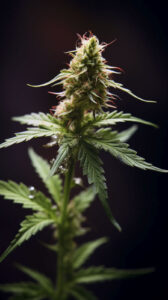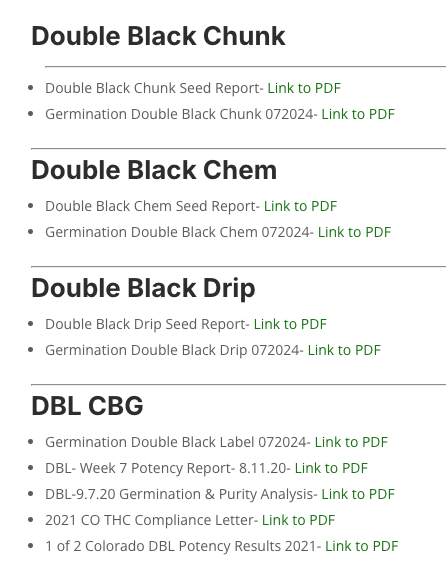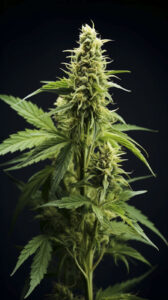Germination Part 3:
So, your CBG seeds have successfully germinated—congrats! But the real work is just beginning.
The seedling stage is one of the most critical periods in a CBG plant’s life cycle. It’s when your plants develop their root systems, adapt to their environment, and lay the groundwork for strong vegetative growth and maximum cannabinoid expression.
In this post, we’ll cover how to nurture CBG seedlings with precision—from proper transplant timing and lighting to early nutrition and stress prevention—so you can unlock the full potential of your high-CBG genetics.


READ OUR REPORTS
At CBGseedsource.com we provide reports on all our seeds sold. You can view any report from our Reports page by clicking the link below.
Reports Page:
👉 CBG Reports


Timing Your Transplant: When to Make the Move
After sprouting, seedlings can be fragile. Transplanting too early (or too late) can shock the plant or stunt its growth.
🕒 Ideal Transplant Timing:
-
Wait until the first set of true leaves (not just the seedling cotyledons) has fully formed
-
Roots should be visible but not overly coiled if using starter plugs
-
Usually occurs 5–10 days after germination, depending on environment
✅ Pro Tip: If you’re using peat pellets or plugs, transplant directly into soil or coco to avoid disturbing the root zone.
Light Requirements for Early CBG Growth
Unlike THC-dominant strains, some CBG cultivars are slightly more sensitive to early-stage lighting. That means you’ll need to dial in intensity and duration carefully.
💡 Seedling Lighting Tips:
-
Use low-heat LEDs or fluorescent T5s to avoid burning tender leaves
-
Keep lights 12–18 inches above seedlings, adjusting based on stretching
-
Stick to an 18/6 light cycle (18 hours on, 6 off) to encourage steady growth
-
Watch for signs of light stress: curling, bleaching, or excessive stretching
💧 Watering Tips:
-
Keep the root zone moist but not saturated
-
Use pH-balanced water (around 6.0–6.5 for soil)
-
Mist rather than drench until roots are more established
🌿 Feeding Guidelines:
-
Start with a diluted seedling formula or compost tea
-
Avoid high nitrogen levels during the seedling phase
-
Introduce mild nutrients only after the second set of true leaves appears

🛠️ CBG Seedling Checklist
-
✅ First true leaves formed before transplant
-
✅ Soft lighting and 18/6 schedule
-
✅ Gentle watering and low-stress environment
-
✅ Mild nutrients only after early leaf development
-
✅ Clean air circulation and pest prevention
Nutrients and Watering: Less Is More
Overfeeding is a common mistake with young plants. CBG strains, especially those with less hybridization, may respond poorly to strong synthetic nutrients in early stages.
💧 Watering Tips:
-
Keep the root zone moist but not saturated
-
Use pH-balanced water (around 6.0–6.5 for soil)
-
Mist rather than drench until roots are more established
🌿 Feeding Guidelines:
-
Start with a diluted seedling formula or compost tea
-
Avoid high nitrogen levels during the seedling phase
-
Introduce mild nutrients only after the second set of true leaves appears

Stress Prevention: Protecting Your Investment
Stress during the seedling stage can cause long-term issues, including:
-
Reduced cannabinoid production
-
Growth stunting
-
Increased risk of hermaphroditism
-
Weak stem structure or poor resilience
🛡️ Ways to Avoid Seedling Stress:
-
Handle transplants gently—support the root ball, don’t yank the stem
-
Avoid big temperature swings (keep between 70–80°F or 21–27°C)
-
Use a fan for air circulation, but don’t blast young plants with direct wind
-
Monitor for pests, fungus gnats, and damping-off disease early and often
CBG-Specific Seedling Traits to Watch For
While every strain is different, high-CBG cultivars often:
-
Grow slightly slower during early veg compared to fast-developing THC strains
-
Stay lower and bushier in early growth
-
Show more genetic variability, especially with seeds not bred for uniformity
-
Require extra care to avoid any nutrient or environmental stress
This is why sourcing from a breeder like CBG Seed Source is so critical—we offer genetically stable, lab-tested seeds bred specifically for reliable CBG production.

What’s Next?
Once your seedlings are well established, they’ll be ready to enter the vegetative phase. That’s when you’ll focus on training, topping, and encouraging healthy branching for flower production.
Our next post will cover: 👉 CBG Germination Part 4: Training and Vegetative Growth for Maximum Cannabinoid Yield


💬 Questions? We’ve Got You Covered
We’re here to help you every step of the way. If you’re growing CBG for the first time or refining your method, check out our premium, lab-verified seed selection at CBGseedsource.com—and reach out anytime for expert support.
🌱 Grow smarter. Grow stronger. Grow with CBG Seed Source.



Recent Comments